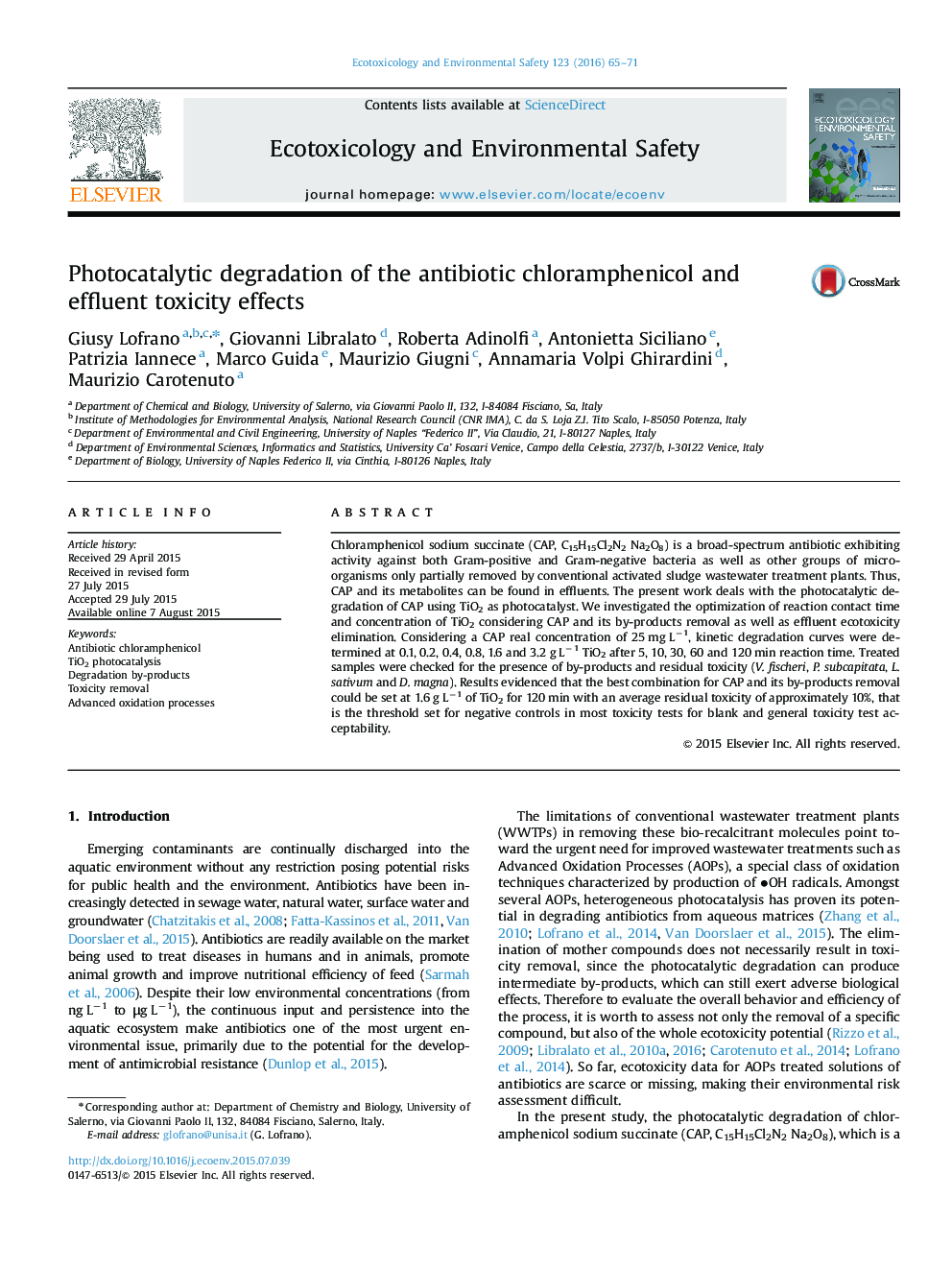| Article ID | Journal | Published Year | Pages | File Type |
|---|---|---|---|---|
| 4419500 | Ecotoxicology and Environmental Safety | 2016 | 7 Pages |
•CAP and its metabolites are not easily removed by activated sludge plants.•Degradation kinetics and toxicity were investigated to look for the best conditions.•Photo-oxidation for 120 min at 1.6 g L−1 of TiO2 completely removed CAP and by-products.•The effluent residual toxicity after treatment was approximately of 10%.
Chloramphenicol sodium succinate (CAP, C15H15Cl2N2 Na2O8) is a broad-spectrum antibiotic exhibiting activity against both Gram-positive and Gram-negative bacteria as well as other groups of microorganisms only partially removed by conventional activated sludge wastewater treatment plants. Thus, CAP and its metabolites can be found in effluents. The present work deals with the photocatalytic degradation of CAP using TiO2 as photocatalyst. We investigated the optimization of reaction contact time and concentration of TiO2 considering CAP and its by-products removal as well as effluent ecotoxicity elimination. Considering a CAP real concentration of 25 mg L−1, kinetic degradation curves were determined at 0.1, 0.2, 0.4, 0.8, 1.6 and 3.2 g L−1 TiO2 after 5, 10, 30, 60 and 120 min reaction time. Treated samples were checked for the presence of by-products and residual toxicity (V. fischeri, P. subcapitata, L. sativum and D. magna). Results evidenced that the best combination for CAP and its by-products removal could be set at 1.6 g L−1 of TiO2 for 120 min with an average residual toxicity of approximately 10%, that is the threshold set for negative controls in most toxicity tests for blank and general toxicity test acceptability.
